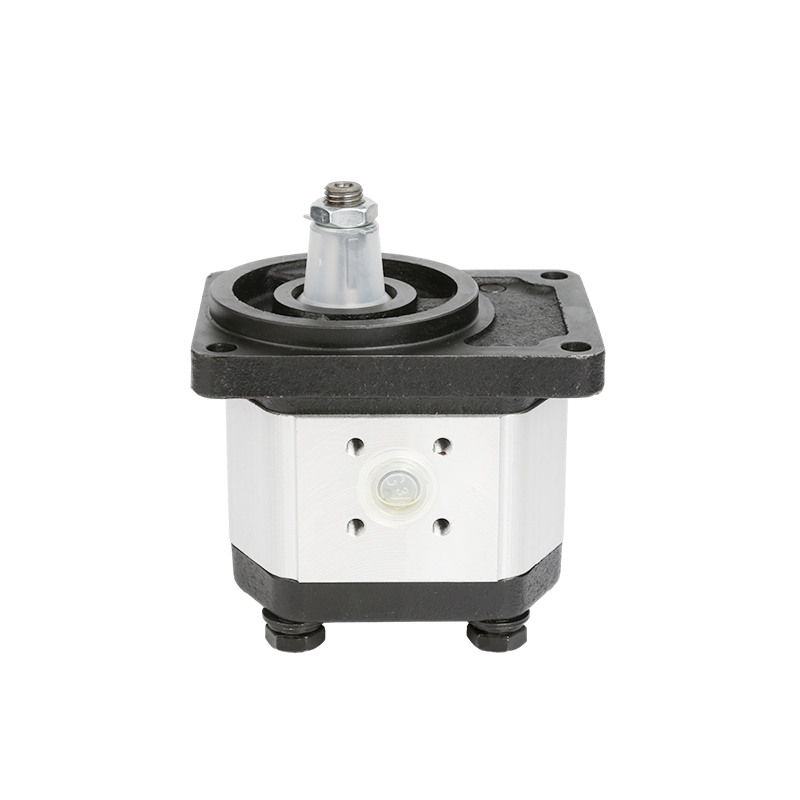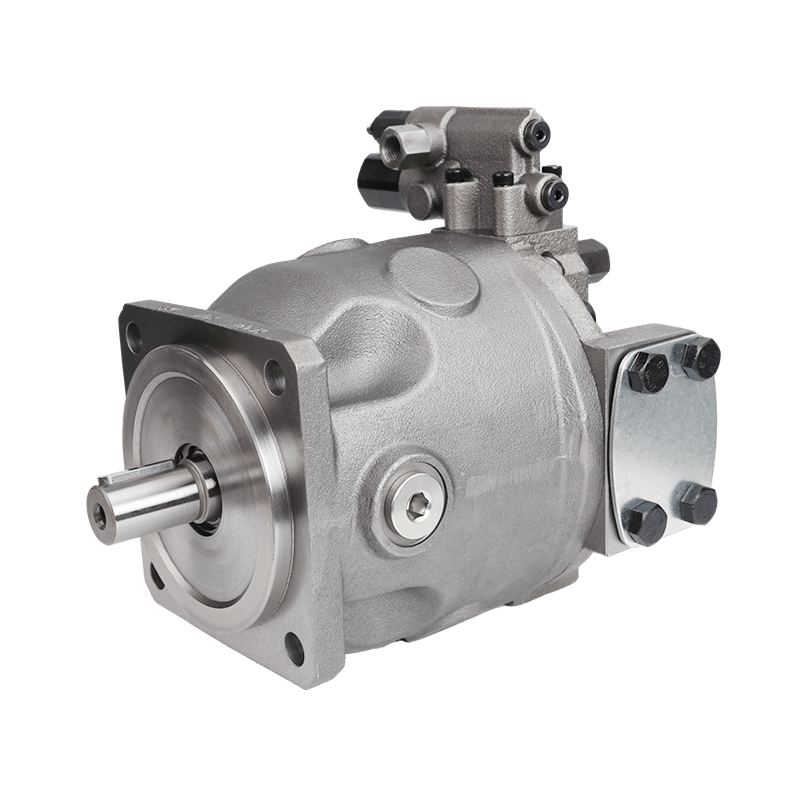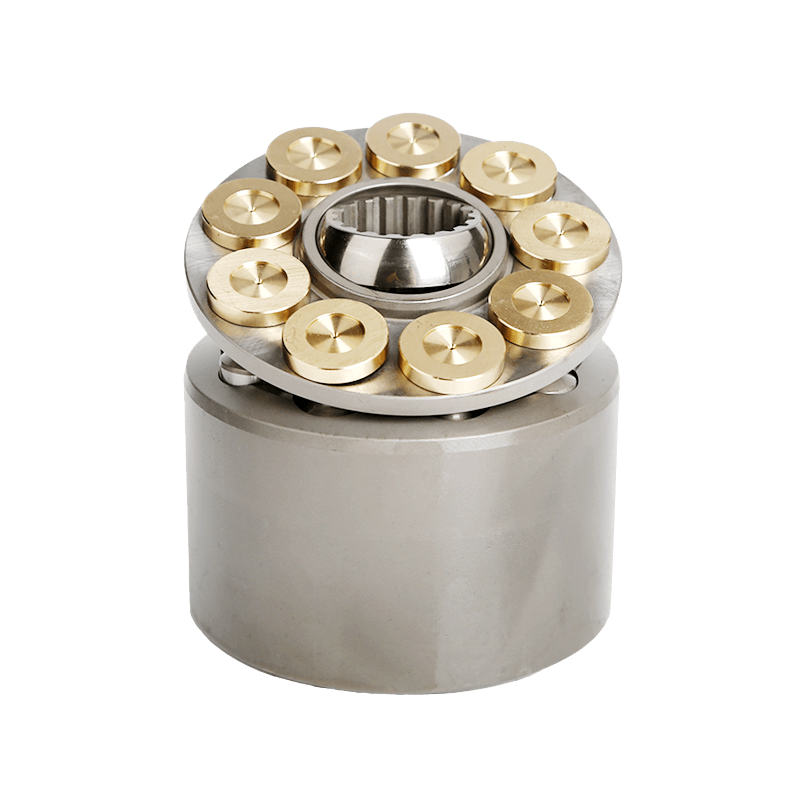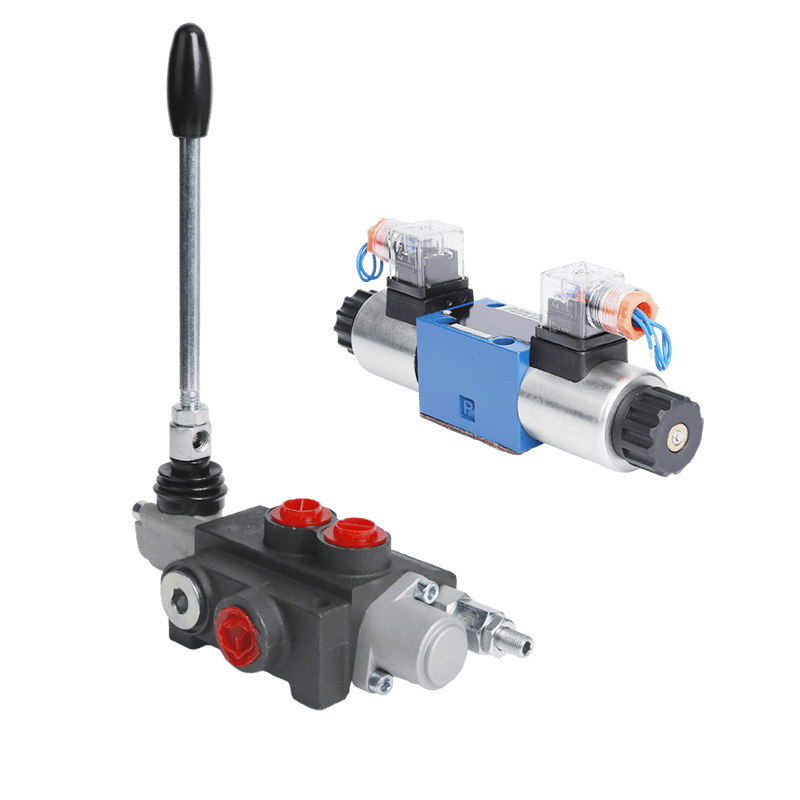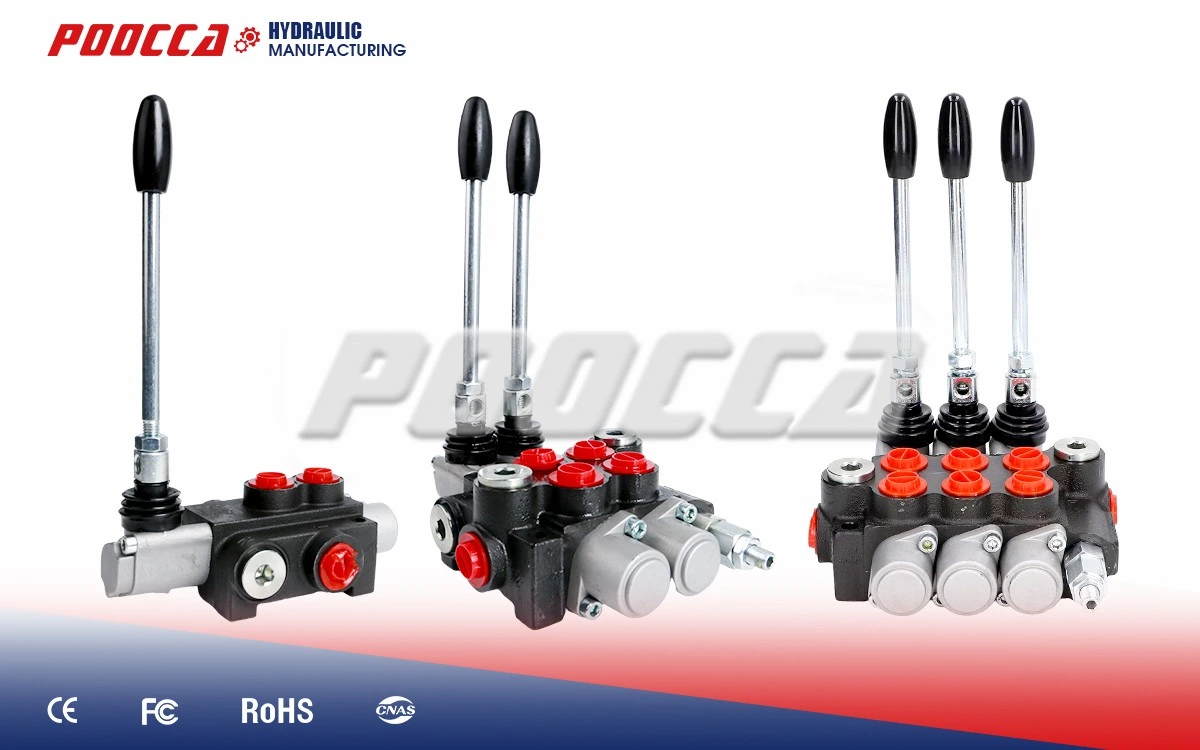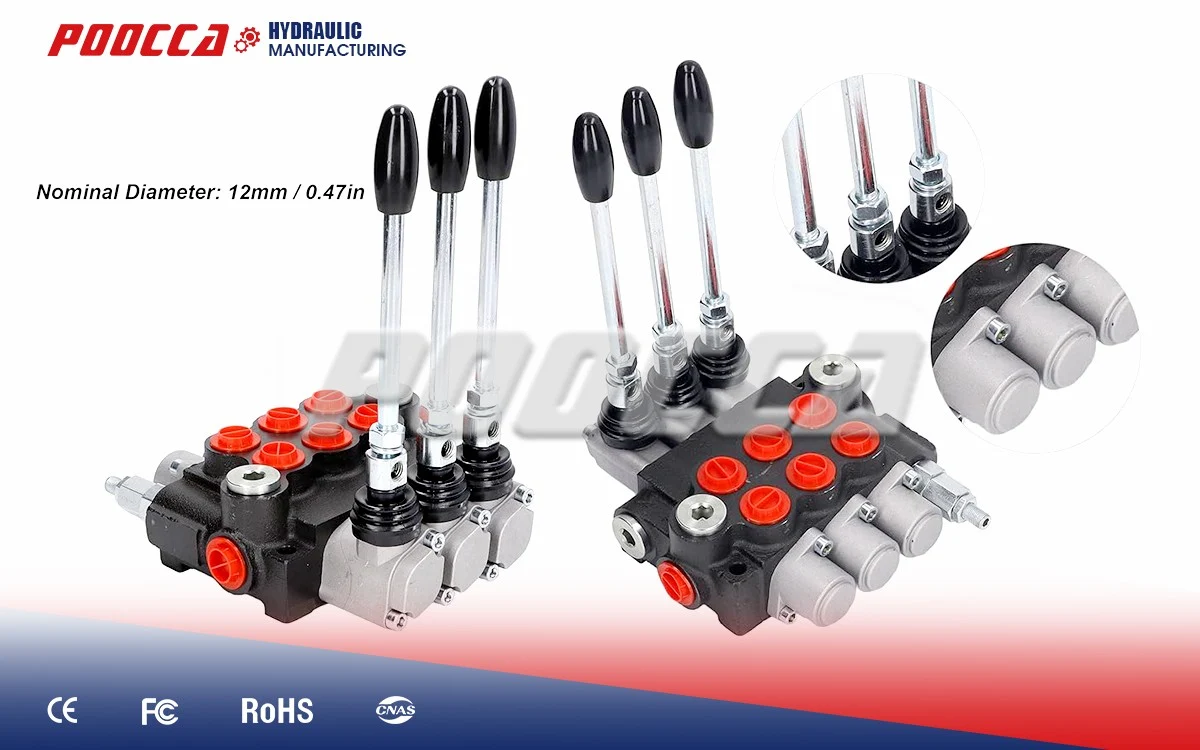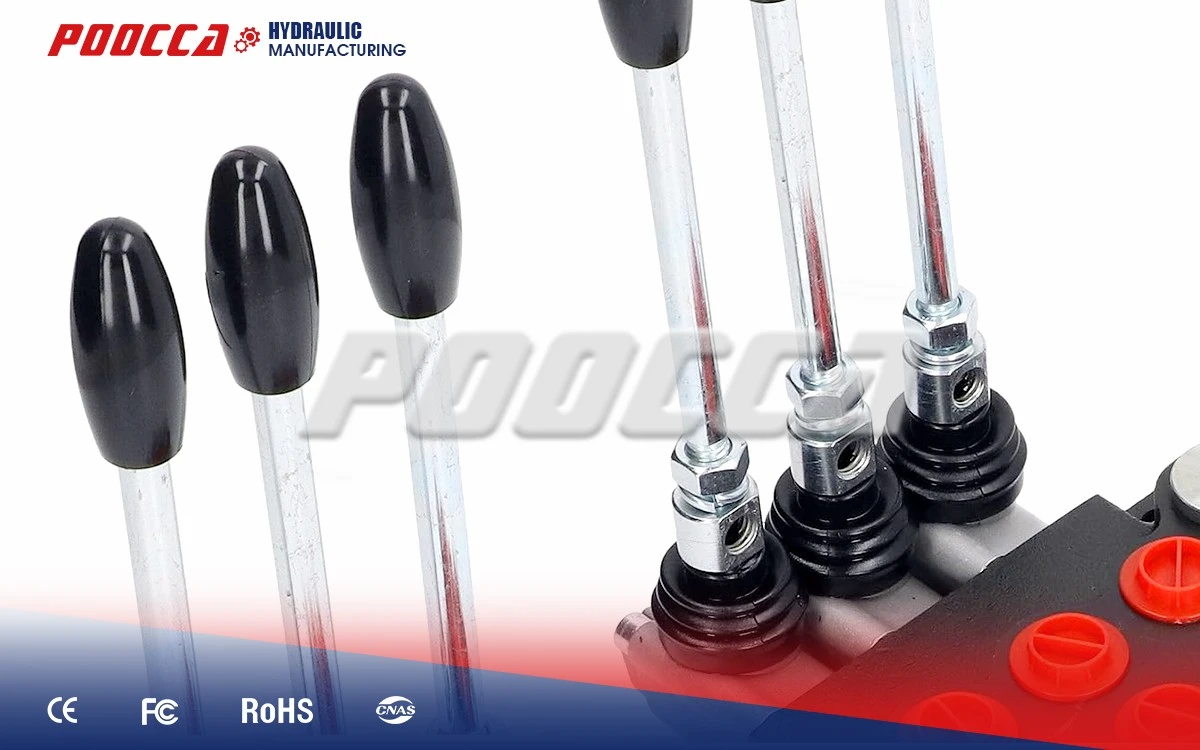Spool valves are essential components in many industrial and mechanical systems, facilitating the smooth and accurate operation of machinery. When spool valves malfunction, it can result in considerable productivity losses and expensive repairs. Knowing the different parts of spool valves and understanding why they might leak is vital for maintaining their peak performance and longevity.
Understanding Spool Valves
What is a Spool Valve?
A spool valve is a device used to control the flow of fluid in a hydraulic or pneumatic system. By shifting a cylindrical spool within the valve body, fluid paths can be opened or closed, thereby directing the fluid to different parts of the system. The spool valve is widely appreciated for its precision and durability, making it an essential component in various applications, from automotive to industrial machinery.
POOCCA Hydraulic (Shenzhen) Co., Ltd. was established in 2006 and has four companies in Hong Kong, Guangdong, Jiangsu and Zhejiang. We are a comprehensive hydraulic service company specializing in the research and development, manufacturing, maintenance and sales of hydraulic pumps, motors, valves and related parts. With extensive experience in providing power transmission and drive solutions to hydraulic system users around the world, we have a strong reputation in the industry.
Key Components of a Spool Valve
Key components of a spool valve include the valve body, the spool, springs, seals, and O-rings. The valve body houses the spool and contains ports through which fluid flows. The spool itself slides back and forth within the valve body, guided by springs that help return it to a neutral position. Seals and O-rings ensure that the system remains leak-free by preventing fluid from escaping the designated flow paths.
Common Applications of Spool Valves
Spool valves are utilized in numerous applications due to their versatility. They are commonly found in hydraulic and pneumatic systems, including construction machinery, agricultural equipment, and industrial automated systems. In automotive systems, spool valves are employed to control transmission fluid flow. The adaptability and reliability of spool valves make them indispensable across various industries.
Causes of Spool Valve Leaks
Wear and Tear
Over time, the components of a spool valve can undergo wear and tear as a result of continuous usage. The repetitive movement of the spool against the valve body can cause abrasion and gradual degradation of the materials. This wear can create gaps that permit fluid to leak, which in turn compromises the efficiency of both the valve and the entire system. Regular inspection and maintenance are crucial for mitigating wear and extending the lifespan of the spool valve.
Contaminants and Debris
The presence of contaminants and debris in the fluid can significantly affect the performance of a spool valve. Particles can get lodged in the valve, causing scratches and damage to the internal surfaces. This can result in improper sealing and fluid leakage. To prevent such issues, it’s crucial to ensure that the fluid used is clean and properly filtered. Regular cleaning and replacing of filters will help maintain the optimal functioning of the spool valve.
Improper Installation
Improper installation is a common cause of spool valve leaks. Errors during the installation process can lead to incorrect fittings or misalignments that compromise the valve’s integrity.
Incorrect Fittings
Incorrect fittings can occur when the connections between the spool valve and the rest of the system are not properly tightened or secured. Loose fittings can cause fluid to escape, leading to leaks. It’s important to follow the manufacturer’s guidelines and use the correct tools and techniques during installation to ensure that all fittings are secure.
Misalignment Issues
Misalignment issues occur when the spool valve is not accurately positioned within the system. Even minor deviations can result in uneven wear on the valve components, which may lead to leaks over time. Ensuring proper alignment during installation is crucial to maintaining the valve’s performance and preventing premature failure.
Faulty Seals and O-rings
Seals and O-rings play a crucial role in preventing leaks within a spool valve. Over time, these sealing elements can deteriorate due to exposure to high temperatures, pressure fluctuations, and chemical interactions with the fluid. Faulty or worn-out seals and O-rings can cause fluid to leak from the valve. Regular inspection and timely replacement of these components are vital to maintaining a leak-free spool valve.
Pressure Irregularities
Pressure irregularities within the system can also lead to spool valve leaks. Excessively high or low pressure can cause stress on the valve components, leading to wear and potential failure. Pressure spikes can cause the seals to burst or become dislodged, resulting in leaks. It’s important to maintain consistent operating pressure within the system and use pressure relief mechanisms to protect the spool valve from abnormal pressure conditions.
In conclusion, understanding the causes of spool valve leaks and implementing regular maintenance practices can prevent many common issues. By addressing wear and tear, contaminants, improper installation, faulty seals and O-rings, and pressure irregularities, you can ensure the longevity and efficiency of your spool valve systems. Regular inspections, timely replacements, and adherence to proper installation practices are key to preventing leaks and maintaining optimal performance.
Preventative Maintenance Strategies
Regular Inspections
Visual Checks for Damage or Wear
Regular visual inspections are essential for spotting early signs of wear and damage in a spool valve. Dedicate time to inspect the valve body, spool, seals, and O-rings for any visible deterioration, including scratches, cracks, or deformations. Promptly addressing these issues can avert more severe damage and leaks. By scheduling consistent visual checks, you help ensure the longevity and efficiency of the spool valve.
Testing for Pressure and Performance
In addition to visual inspections, periodic testing for pressure and performance is essential. Utilize calibrated equipment to verify that the spool valve maintains the correct pressure levels and performs optimally under operational conditions. Consistent pressure testing helps in detecting irregularities early, allowing you to take corrective actions before they escalate into major issues. Ensure that results are documented and analyzed to track the health of the valve over time.
Cleaning Procedures
Best Practices for Cleaning
Cleanliness is crucial in maintaining a spool valve. Implementing stringent cleaning procedures ensures the removal of contaminants that could impair functionality. Use compressed air or soft brushes to clear away dust and debris from the external surfaces. Internally, flushing the system with clean fluid helps to dislodge particles that may cause abrasion or blockage. Maintaining a clean environment reduces the risks of wear and tear, ultimately preventing leaks.
Recommended Tools and Solvents
Select the right tools and solvents to clean your spool valve effectively. Use non-abrasive tools, such as soft brushes and lint-free cloths, to clean delicate parts. When choosing solvents, ensure they are compatible with the materials used in the valve and can effectively dissolve contaminants without causing damage. Always refer to the manufacturer’s recommendations for selecting appropriate cleaning agents. This approach helps maintain the integrity and performance of the spool valve.
Proper Installation Techniques
Step-by-Step Assembly Guide
Proper installation techniques are crucial for the optimal functioning of a spool valve. Begin by thoroughly cleaning the valve and system components. Next, adhere to a detailed step-by-step assembly guide to ensure that all parts are correctly aligned and secured. Start by attaching the valve body to the system, then carefully insert the spool and position the springs. Tighten all fittings to the recommended torque, ensuring no parts are left loose or misaligned. Such meticulous assembly prevents installation-related leaks and enhances valve efficiency.
Importance of Following Manufacturer Guidelines
Adhering to the manufacturer’s guidelines during installation ensures the spool valve is fitted correctly, reducing the risk of leaks. Manufacturer guidelines provide precise specifications on torque settings, alignment procedures, and the sequence of assembly. Following these instructions guarantees that the valve operates as designed, preventing potential failures due to improper installation. Always refer to the manufacturer’s manual, as these guidelines are tailored to the unique requirements of each spool valve model.
Seal and O-ring Maintenance
How to Replace Seals or O-rings Correctly
Seals and O-rings are crucial for maintaining a leak-free spool valve. Begin by shutting down the system and relieving any pressure. Carefully dismantle the valve and remove the worn seals and O-rings using appropriate tools. Clean the sealing surfaces thoroughly before installing new seals or O-rings. Ensure that replacements are correctly sized and compatible with the system’s specifications. Proper installation of these components is vital for effective sealing and preventing fluid leakage.
Signs Indicating Replacement is Needed
Over time, seals and O-rings in a spool valve may degrade and require replacement. Look for signs such as visible wear, cracks, discoloration, or brittleness during inspections. Additionally, performance issues like inconsistent pressure or fluid seepage around the valve indicate that it’s time to replace the seals or O-rings. Regular monitoring and timely replacement of these small but critical components can significantly extend the life and performance of the spool valve.
Troubleshooting Tips for Existing Leaks
Identifying Leak Sources
Methods to Pinpoint Leak Areas
To accurately identify the source of a leak in a spool valve, follow a systematic method. Start by visually examining the valve and its surrounding parts for any signs of fluid leakage, such as wet areas or accumulated fluid. Employ fluorescent dyes and UV lights to spot less apparent leaks. Furthermore, pressure testing can reveal inconsistencies that signify leaks. Keeping detailed records of your observations during these inspections is crucial for precisely locating and addressing the leak’s origin.
Tools to Aid in Identification
Various tools can aid in identifying leaks in a spool valve. Pressure gauges and leak detection kits with fluorescent dyes can reveal hidden leaks. Ultrasound devices are also effective, enabling you to hear escaping air or fluid under pressure. Utilizing these specialized tools enhances your ability to diagnose leak sources accurately, ensuring precise and effective repairs. With the proper tools, proactive maintenance becomes much more manageable.
Benefits of Regular Maintenance on Spool Valves
Implementing regular maintenance practices for a spool valve offers significant benefits that ensure the longevity and efficiency of the system. One of the primary advantages is the reduction in unexpected downtime. Regular maintenance allows for the early detection and correction of potential issues before they escalate into significant problems, thereby keeping machinery running smoothly and avoiding costly interruptions.
Another key benefit is the extension of the spool valve’s lifespan. By routinely inspecting and servicing the valve, you can prevent wear and tear from reaching a point where major components need replacement. This not only conserves resources but also contributes to the sustainability of your operations. Additionally, well-maintained spool valves operate more efficiently, optimizing fluid flow and pressure control, which enhances overall system performance.
Regular upkeep also guarantees adherence to industry standards and safety guidelines. Well-maintained spool valves reduce the likelihood of leaks and potential hazardous situations, thereby safeguarding both personnel and the environment. Additionally, a frequently overlooked advantage is the cost savings derived from regular maintenance. Although there are initial costs for inspections and minor repairs, these expenses are considerably lower than the costs associated with extensive damage or total system failure.
At POOCCA, our strength is our dedicated team of over 300 professionals. Within this highly skilled workforce, we have a dynamic team of 70 sales professionals who possess vast experience and in-depth knowledge of our industry. Their expertise is crucial in providing tailor-made solutions and exceptional services to our valued clients.

